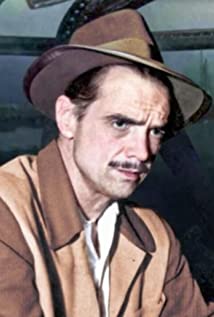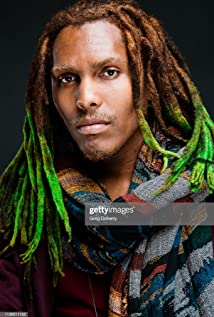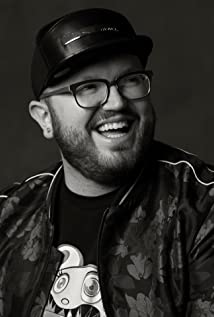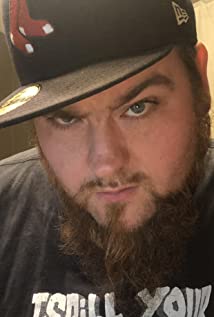For a period of time in the 1940s-late 1950s, the Hughes Tool Co. ventured into the film and media industry when it bought the RKO companies, including: RKO Pictures; RKO Studios; RKO Theatres, a chain of movie theatres; the RKO Radio Network and a network of radio stations. In 1948 multi-millionaire businessman, film producer, film director and aviator Hughes gained control of RKO, a struggling major Hollywood studio, by acquiring 25% of the outstanding stock from Floyd Odlum's Atlas Corporation. Universal Pictures acquired the American distribution rights in 1951 of the 1948 J. Arthur Rank-Archers feature film The Red Shoes (1948), originally released in a small London art house movie theater in September of 1948. Hughes, so impressed with Michael Powell's dance film starring the Sadler Well's Ballet principal dancers Moira Shearer, Léonide Massine and Robert Helpmann that he wanted his own ensemble corps de ballet company. So he just decided to buy himself a ballet-dance company in an effort to expand the creative base of his RKO film studio acquisition. Hughes had been impressed with the success of "Les Ballets de Paris de Roland Petit." An outstanding classical dancer as a youth, Roland Petit swiftly decided on a career as a rebel against the traditionalism of the Paris Opera Ballet, and before the age of 25 had created three of his most iconic ballets, "Le Jeune Homme et La Mort," world premiere on 6/26/46, Les Ballets des Champs-Elysee, Theatre des Champs-Elysee, Paris; the Jean Cocteau ballet "Les Demoiselles de La Nuit," world premiere Theatre Marigry, Paris 5/21/48, Les Ballet de Paris de Roland Petit, featuring Margot Fonteyn; and the ballet "Carmen," world premiere in London, Prince's Theatre, on 2/21/49, with the sultry young Jeanmaire as the lethal female destroying a hapless male. These ballets caused a sensation worldwide and Petit and Zizi Jeanmaire swiftly became the most exciting names in French dance, closely associating with Jean Cocteau, Édith Piaf, Yves Montand and the new intellectuals of Left Bank Paris. Hughes contracted Petit and his Paris-based "Ballet de Paris de Roland Petit" for film assignments, including all personal appearances in North America. Petit and his core dance company's flight from Paris to Los Angeles' airport was on Hughes' own Trans-World-Airlines (TWA). Hughes acquired control of TWA in 1939, and after World War II led the expansion of the airline to serve Europe, the Middle East and Asia, making TWA a second unofficial flag carrier of the United States after Pan Am. The dance troupe, housed in a Culver City hotel, were assigned a film stage for intense preparatory workouts and dance rehearsals. After six months of isolation in Culver City, the troupe's enthusiasm for their new North American venture had dwindled, with their intense serious practicing, rehearsing, exercising and with no stage nor film scheduled assignments, the core of dancers became extremely mutinous. En masse the Parisian rebels packed their luggage, arriving at the TWA Los Angeles air terminal with their round-trip tickets in hand, checking in for their return flight to Paris. The troupe of Francophiles did not know that their boss Hughes owned TWA. The TWA passenger agents alerted Hughes that a horde of "French-speaking gypsies" were at the TWA air terminal, demanding a return flight to Paris with their original TWA round-trip flight tickets in hand. RKO's security division immediately descended upon the air terminal with a fleet of buses to round up Hughes' herd of cattle, "the RKO-Ballet de Paris de Roland Petit" dance company, confiscating all of the ticket bills the TWA ticketing agents had collected. Returning to their hotel, the troupe was assured that they would be put to work on a Hollywood musical film. Samuel Goldwyn, his production company located at RKO's "The Lot," 1041 North Formosa Avenue in Hollywood, was in pre-production to star Danny Kaye in an original musical film based on Hans Christian Anderson, with a story by Myles Connolly, a screenplay by Moss Hart and Ben Hecht, with words and original music composed by Frank Loesser. Goldwyn had initially offered the film's ballerina role to Moira Shearer. Since Goldwyn was under an RKO contract, Hughes ordered him to use Petit, Zizi Jeanmaire and Petit's Ballet de Paris dance troupe. Petit insisted on his French stage production scenic and costume designer Antoni Clave be flown to Hollywood as his film design collaborator. RKO costume designer Mary Wills joined the art department; Barbara Karinska was brought from New York City to supervise and construct all of the film's ballet and principle's costumes. Art director Richard Day, another RKO film designer, collaborated with Antoni Clavé on all of the feature film's stage and ballet sets. Petit insisted hiring Danish danseur noble Erik Bruhn, one of the greatest premier male dancers of the 20th century, noted for his outstanding classical technique and immense stage presence. He epitomized the ethereally handsome prince and cavalier on the international ballet stage. The film's director, Charles Vidor was cursed with Petit's creative driving force, stimulus, momentum, Petit contributing in every scene and camera setup. Petit was the impetus for the movie's visual magic.






